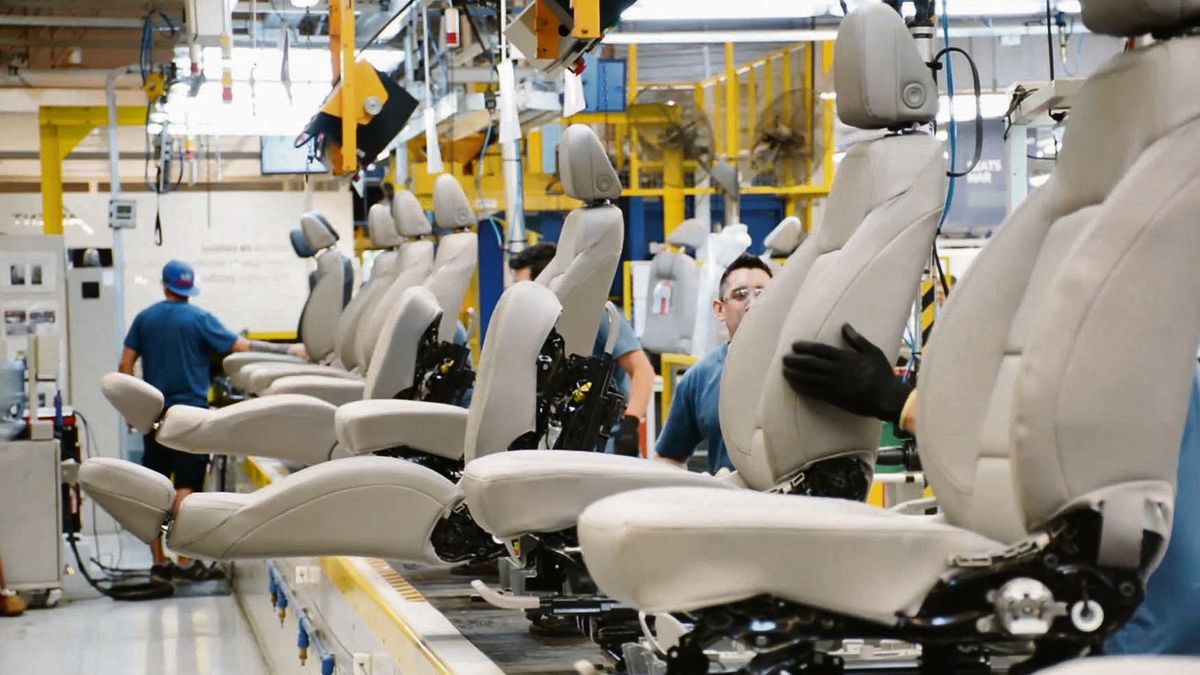The Local Autopartist Industry does not go through its best moment And the panorama for the medium term suggests that it will get worse. It is not a topic today, but comes from drag. Nor is it the responsibility of the current government or, completely, of the previous ones. In the last 15 years, 52 companies in the sector closed. Only three left between 2024 and what goes from 2025. The problem affects the efforts of Cristina Fernández de Kirchner, Mauricio Macri, Alberto Fernández and, also, of Javier Milei.
Beyond the ballast generated by the Argentine economy with its high costs, high taxes (provinces and municipalities that continue to increase them) and their unpredictability, there are issues that exceed local reality and go through strategic decisions of automotive worldwide.
The Nacinal Autopartist Industry, concerned about insertion into the market
It is true that Brazil It absorbs investments such as a sponge (larger market, clear play rules, stability), but is not exempt from this global phenomenon that does not respond to the conditions offered by a country. Three years ago, Ford left industrially from Brazil, not Argentina.
The automotive world is changing faster than it can be assimilated and that has consequences. New technologies (hybrid, electric, freelancer vehicles, etc.) mark a before and after in this industry. Argentina, in this context, loses relevance.
That is why autopartism has a very difficult challenge. Quite more than the terminals they manufacture, which has a little more margin to reinvent themselves, but no longer with the same power as before.
Ford Automotriz Industry Autopartes
The local industry lit the alarms due to the low integration into new projects.
A disinvestment process that will have an escalation for the changes that are taking place in the sector.
While there are several automotive with projects of new models in progress, their characteristics are not optimistic for autopartists. To this is added, the end of production of some models that generated demand for suppliers.
The level of integration of national pieces in automotive production is not very high. Although 50% is spoken (there is no official number), who are within the heart of the industry suggest less, about 30%. But much of that number is sustained by two or three companies.
There is one Autopartes Law which gives different benefits for 0km production. A 30% integration floor is required. A few projects were able to host this law: the manufacture of the Toyota Hilux, the Ford Ranger and the Volkswagen Amarok (the current one). The rest did not qualify to enter that regime.
From the Autopartist sector they alert for the critical future they face. The situation varies according to the clients they have, due to the low level of integration of the new models they will produce and the progress of the CKD strategy, the parts assembly system. To this is added the increase in the importation of auto parts for replacement me.
Suppliers that the greatest incidence of their sales to Toyota and Ford, They are the best positioned. The two terminals have solid products and the production is increasing.
With the sale of Mercedes-Benz A question opens for the autopartists who sell you pieces.
In the case of Nissanin Córdoba, it was confirmed that it stops producing in the country at the end of 2025. The terminal has already informed its suppliers of 50% of purchases for this year.
Also, in Santa Isabel, there is the new Niagara Pickup project. It is estimated that the content of national pieces will be below 30%. “With a lot of effort and scratching, it will approach 30%, no more. And, that, with a lot of imagination, with pieces of Tierra del Fuego, explained a supplier who works for that project.
To this is added that, with the new pickup, the manufacture of Sandero, Logan and Stepway will be disaffected. Kangoo continues. Also Alaskan pickups is stopped by Nissan’s decision.
On the side of Fiatwhich also has the production of a pickup, according to sources in the sector, The integration of pieces will be less than 25%.
Another case is to Volkswagen. Not only does it stop producing the taos and is negotiating with the suppliers of that model the economic compensation for canceling the restyling of the SUV, but it is underway the manufacture of a pickup based on a platform of the automotive Chinese SAIC. The investment announcement will be made next Thursday. Also the level of integration – at least the initial – will be low. “It hardly reaches 20% of the local component”he estimated a source. In fact, the automaker is calling suppliers that currently supply Amarok to participate in the new project and, according to versions that circulate, many will be outside. “Of every 10 suppliers, two will continue,” added another source.
All this panorama indicates that the new projects will set aside many suppliers. The sector uses 50,000 workers directly.
Source: Ambito
I’m a recent graduate of the University of Missouri with a degree in journalism. I started working as a news reporter for 24 Hours World about two years ago, and I’ve been writing articles ever since. My main focus is automotive news, but I’ve also written about politics, lifestyle, and entertainment.




